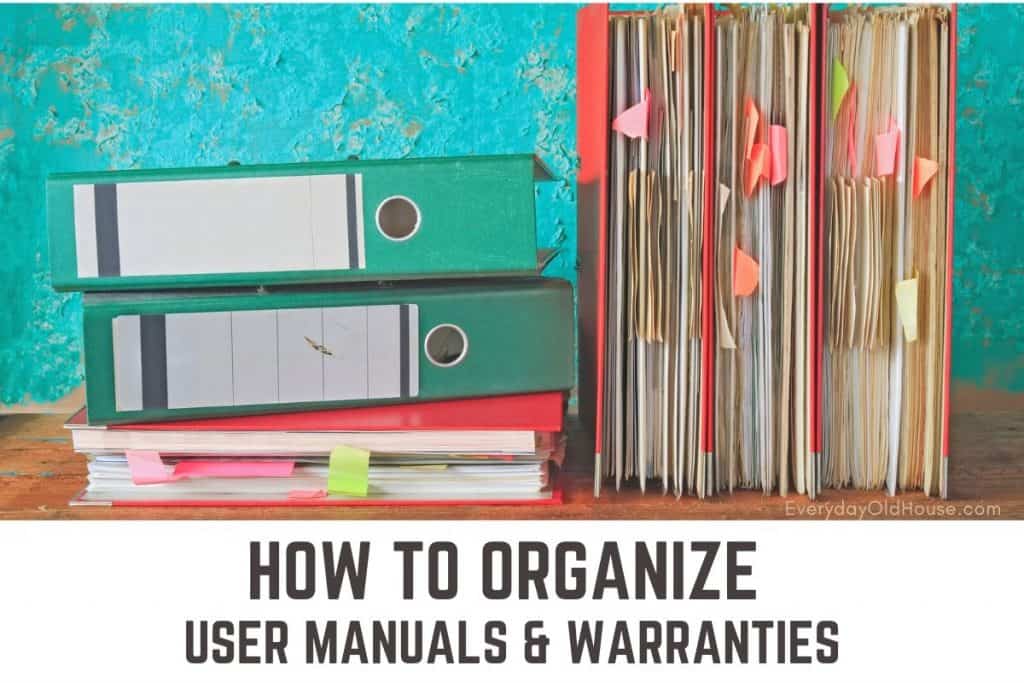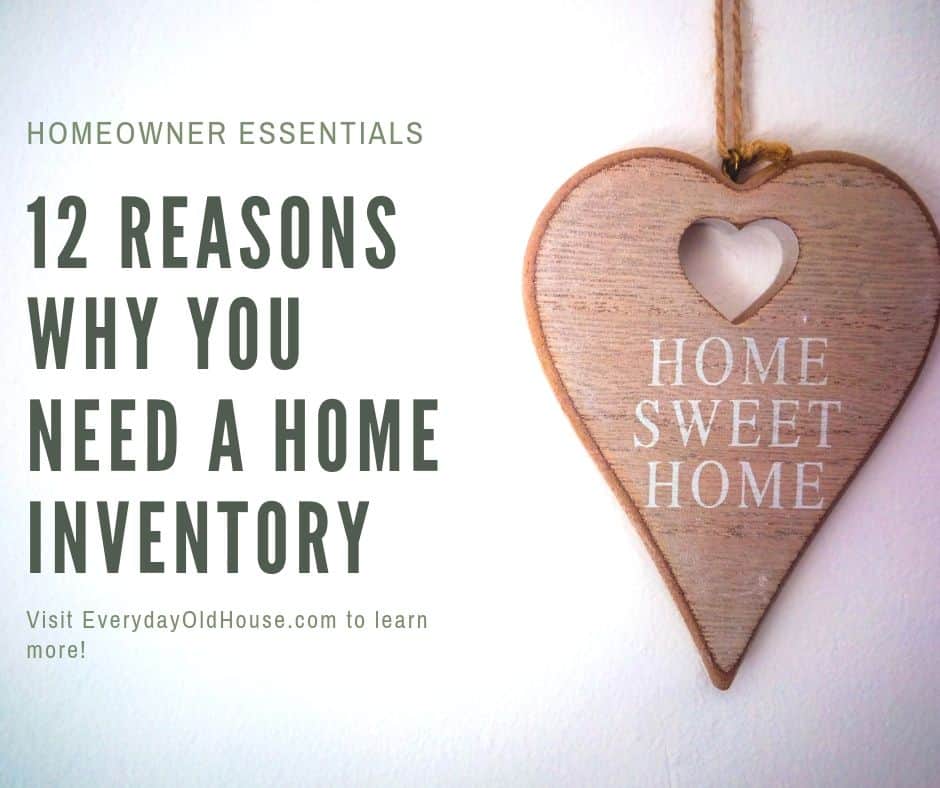Last Updated on January 5, 2024
Homeownership comes with a lot of responsibility. And paperwork. Tons of receipts, invoices, manuals, warranties, mortgage documents, insurance policies, etc…. And chances are, all that paperwork is hiding in various places throughout your house. It’s time to get it all in one place. So today, I’m going to get into the nitty-gritty of how to easily create a homeowner journal – from what it is, what supplies you need, and how to (easily) organize it.
Ready? Let’s go!

This post contains affiliate links, including but not limited to, Amazon Associates. As such, I earn from qualifying purchases. Full disclosure located here.
What is a Homeowner Journal?
Quite simply, a homeowner journal is where you organize and store essential and pertinent information about your home. Think of it as your home’s “user manual”. Slightly different than a Family and Home Emergency Binder, a homeowner journal focuses solely on your home and its day-to-day workings.
What Supplies Do You Need to Create a Homeowner Journal?
There are a variety of ways to create a homeowner journal. The biggest decision is whether you want to create a paper or electronic homeowner journal. There are pros and cons for both. For example, digital storage is advantageous because it takes up less space, but sometimes paper is more easily accessible. For cons, paper can be destroyed in a house fire, but electronic information could potentially be hacked.
Personally, I prefer a paper version for a homeowner journal, so that is what I’ll focus on. Paper journals are commonly organized using 3 different ways:
- Binders
- File cabinet/ storage boxes
- Pre-filled books
Binders
If you are a binder person, here’s the supplies you could use to create a homeowner journal:
- 3-Ring Binder (usually 3-4” wide)
- Document Protectors
- Tabs/ Dividers
File Cabinet or Storage Boxes
If you have a lot of paper, binders may not suffice. Instead, you may want to consider a file cabinet or storage boxes with hanging folders. This is actually the structure I use. The top cabinet to all our house’s file cabinet is dedicated to our home’s information, organized by hanging folders. (With the exception of user manuals. But we will get to that…).
Pre-filled Homeowner Journals
I’m not a huge fan of these since you have less freedom to organize as you please, but some people swear by these pre-made homeowner journals…..
What Paperwork Do You Need to Create a Homeowner Journal?
If you use the binder or file cabinet method of creating a homeowner journal, consider the organizing your home’s information into these into 9 sections.
It may sound like a lot, but I promise it isn’t!
1. Purchase/ Real Estate Information
This includes all the information you received while buying your house. Realtor.com indicates 8 real estate documents to keep, including:
- Purchase Agreement
- Addenda and Amendments
- Seller Disclosures
- Home Inspection, Appraisal, Realtor Detail Sheet
- Closing Disclosure and Mortgage
- Title Insurance
- Property Deeds, Plot Plans
For some, there can be an overwhelming amount of paperwork, especially the mortgage. We have a lot of paperwork from our mortgage. So I actually separated out some of this section (especially the mortgage paperwork) in separate hanging files.
2. Contractors and Service Providers
This section, albeit small, is an important section. This contains all the contact information related to contractors and service providers that you rely on. There’s a lot of contractors and service providers that you use to keep your home running smoothly, including:
- Appliance Repair
- HVAC company
- Electrician
- Plumber
- Roofer
- Mason
- Paver
- Painters
- General Contracting/ Handyman
- Cleaners
- Landscaping
- Locksmith
- Utility providers
And this is also a place to store potential contractors. Just because you like your gutter guy now, doesn’t mean you won’t be interested in changing them in the future. In this section, throw in the business cards or recommendations from neighbors and friends for future contractors. Maybe you don’t need a new roof right now, but eventually you will, so write down the name and number of the roofing contractor that your friend just raved about so you have it in the future.
3. Interior and Exterior Paint Colors
Can you remember the paint color in all your home’s rooms? How about your house’s exterior? We recently painted the exterior of our house and I couldn’t tell you the two colors we chose if my life depended on it!
You could say – don’t you have left over paint with labels? Sure, I’d say. I have a collection of half-used paint cans in my basement. But I’m a messy painter, so chance are I’ve painted over any label with a color code or description…
For your homeowner journal, create a folder to document your paint colors. You can throw in the paint sample cards or use this free paint color tracker where you can keep track of the brand, color, sheen, and quantity of paints in every room.
4. Maintenance
Home maintenance. Upkeep. Ugh. Some of it fun, most of it not. Either way, home maintenance needs to be done (especially if you have an old house like ours).
Home maintenance includes major expense like a new roof or furnace, as well as the smaller (but still as important) seasonal HVAC cleaning and gutter cleaning.
In this section, keep track of your home maintenance by filing receipts for the larger maintenance tasks, as well as any seasonal checklists.
This running tally of home maintenance might help you when it comes to selling your house in the future. When we were looking for our first home, we came across a house that included a binder that documented everything that had been done to the house over the last 20 years. New roof, new fencing, new furnace, recent painting, etc…. As a potential buyer, I was immensely impressed at the homeowner’s record-keeping, which indicated to me that the house had been well-maintained.
5. Renovations
If you have completed an addition or major renovation, this is the perfect section to add invoices, plans, permits, before and after photos, and any other paperwork that outlines the improvements made to the house.
When working on your home, having a document that houses all of the histories of the property will help you financially and logistically. This journal will keep you tapped into the exact details about your house, which will increase your odds of qualifying for any home renovation loans, such as a home equity loan. A homeowner journal should help you more accurately identify exactly how much equity you have in your home.”
6. User Manuals/ Warranties
This section is dedicated to hold all the user manuals and warranties of your major appliances, furnaces, HVAC units, light fixtures, electronics, and anything else you deem necessary to hold onto.
Personally, we have a ton of user manuals. So many that they took up way too much room in the filing cabinet. I ended up taking them out of the filing cabinet and storing them in a medium sized plastic storage box. For more ideas on how to organize your user manuals, check out 7 Ways to Organize Your User Manuals.
7. Insurance
Keep a copy of your homeowner’s insurance, invoice, and agent contact information in this section. Hopefully you will never need it…
[While we are on the topic of insurance, you may want to dive into considering setting up a free Home Inventory, which could be a game-changer if you ever have to file a large claim due to theft or fire].
8. HOA Codes and Restrictions
If you happen to live in a home with a Homeowners Association (HOA), you might want to keep a copy of the codes and restrictions.
9. “Dream Home” Project Ideas
Here’s is your dream file, your home’s “vision board”. This could be pages with ideas ripped from magazines, the names of flowers you adored in your neighbor’s garden, or photos of houses you saw and fell in love with during your last roadtrip.
10. Miscellaneous
Let’s face it, no organization system is perfect. So go ahead and add an extra tab in your binder or hanging folder in your file cabinet. Something will pop up that you want to organize that doesn’t quite fit into the other sections. For us, our “Miscellaneous” was a mortgage refinance a few years into homeownership.
Related Posts
Want to be the first to know about new posts? Be sure to follow me on Pinterest, Facebook, Instagram or Twitter of even Etsy! Or better yet… Subscribe below!
My monthly (admittedly sometimes more, sometimes less….) emails are like receiving a unexpected letter from an old friend WITHOUT needing to put on your slippers and walk out to your mailbox…. See? I got ya, my friend!)
[Note: My posts are proudly connected to these amazing link parties full of DIY ideas and inspiration!]











